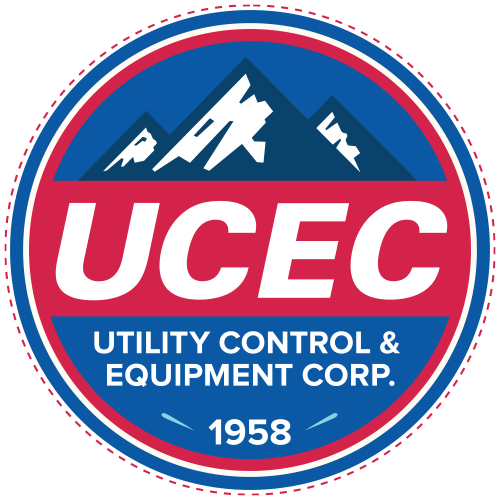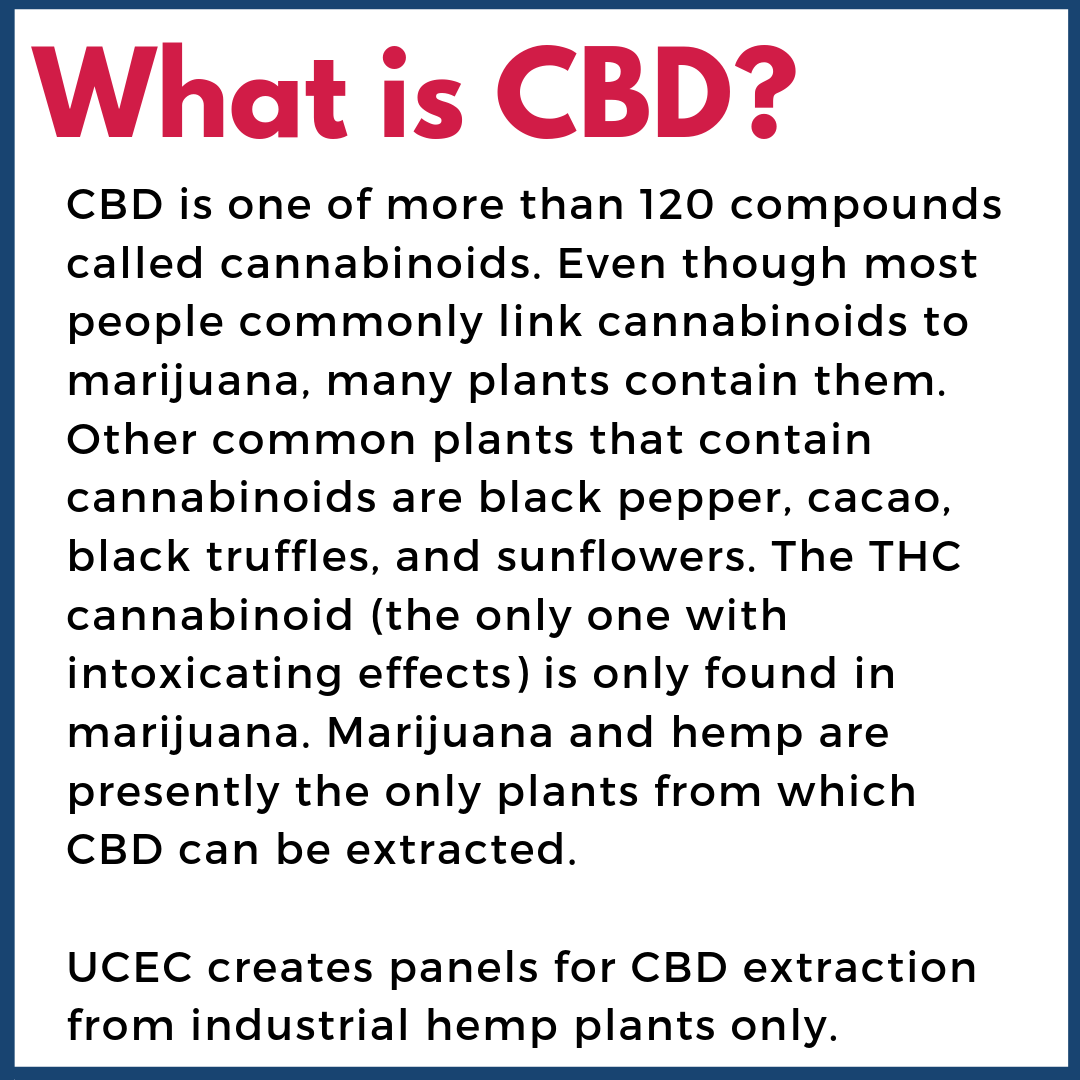Using Control Panels for CBD Extraction from Industrial Hemp
As a control panel shop, we create industry specific panels for a variety of major markets. This post is the fourth in a series detailing how our panels serve some of these different industries. Don’t miss our previous installments about panels in the food and beverage industry, the oil and gas industry and the pharmaceutical industry. Though these different industry panels all contain the same core components, those components are put to vastly different uses.
Extracting CBD from industrial hemp is a precise and highly combustible process. Every step needs to be carefully calibrated for safety, cleanliness and quality. Fortunately, UCEC panels are known for their precision and quality making us a perfect partner for this emerging industry.
CBD extraction has five principle stages:
Drying and reduction
Ethanol extraction
Solvent recovery
Decarboxylation
Distillation
Control panels are deployed throughout every stage of the process to properly run and monitor equipment.
Control Panels for Drying and Reduction Systems
Drying and reduction systems take the raw hemp, dry it to a lower moisture level and reduce it to the appropriate size for extraction. Control panels manage the belt or paddle dryers, the rough grinding chipper, cryogenic grinder and the pelleting machine used for granulation of the materials.
Control Panels for Ethanol Extraction
Next, ethanol extraction is the process of soaking the dried, reduced hemp in ethanol to pull the CBD into the solvent. This is done in batches with centrifugal chambers. Centrifugal control panels are small cabinets that don’t have a PLC (program logic controller). This requires our team of craftsmen to program a VFD (variable frequency drive) to spin a several-horsepower motor at different rates based on the biomass of the batches it’s processing. Because centrifuges are a constant torque application, they must reach maximum speed and reach a resting state very slowly. The panel is programmed to control the carefully calibrated acceleration and deceleration rates. As our own Garrod Massey will tell you, it is not as simple as programming an “on/off” application.
Control Panels for the Solvent Recovery Process
The hemp is then removed from the mixture, leaving a solution of ethanol and CBD extract. The solvent recovery process separates the CBD from the ethanol. Because of the cost of ethanol, most solvent recovery systems are also recycling systems. In today’s marketplace it’s now possible to recover 95-98% of your solvent. The process uses evaporation and distillation to remove the solvent from the CBD extract. Control panels are programmed to manage the machinery and convey sensor reports managing control variables like temperature and humidity.
Control Panels for Decarboxylation
Decarboxylation is a process that removes a carboxyl group and releases CO2. The process of decarboxylation converts the inactive compounds into active compounds, essentially unlocking the therapeutic effects of the CBD.
The CBD extraction facility takes the dried extraction oil from the solvent recovery systems and holds it at an elevated temperature for long enough to decarboxylate.
To accomplish this, oil is heated and ran parallel to the extract. The oil heats the extract without contact at the proper pace and for the proper duration so it can fully undergo the decarboxylate process and the CO2 is released. Control panels control and monitor the heating of the oil ensuring it reaches and maintains the right temperature for the required period of time.
Temperature throughout every stage of the extraction process is critical to monitor. Overheating CBD will cause some of the beneficial chemicals to lose their structure and break down.
Control Panels for CBD Distillation
Finally, the CBD extract undergoes distillation. Terpenes present in the hemp might impact the flavor, scent and potency of the product from one batch to the next. Distillation isolates the CBD from these remaining components to create a consistent extract that can be infused into the final product (oils, balms, etc.).
Commercial distillation units have three major components: a boiling flask, a condensing head, and a collection flask. The CBD is heated in the boiling flask. The vapor then passes through the condensing head (turning the vapor to a liquid) and collects in the collection flask, thereby isolating the CBD components.
Distillation Control panels control pumps and the boilers. The pumps are for feed and extraction of the product through the distillation process.
How Control Panels Prepare and Package CBD
Control panels can be used to manage the machinery used to prepare the CBD extract as an oil, balm, pill or edible. Once complete, a conveying system takes the composed material to a packaging machine. The packaging machine places the material into the bottles, boxes or tins they’ll be distributed in. The packaging machine also applies labels to these containers.
Features of CBD Panels
Because of the combustibility of the product, most panels for the CBD industry are Class 1 Division 1 or Class 1 Division 2 hazardous location panels– much like in the oil and gas industry.
CBD extraction facilities also have the cleanliness of a pharmaceutical operation since they’re creating a product for human consumption. The types of steel used on the control panels must be a certain grade with specialized gaskets much like you’ll see on control panels in the pharmaceutical industry.
Extracting CBD from hemp is a long and scientifically-dense process. We’re proud to have our panels trusted to conduct these precise processes in this emerging industry.




